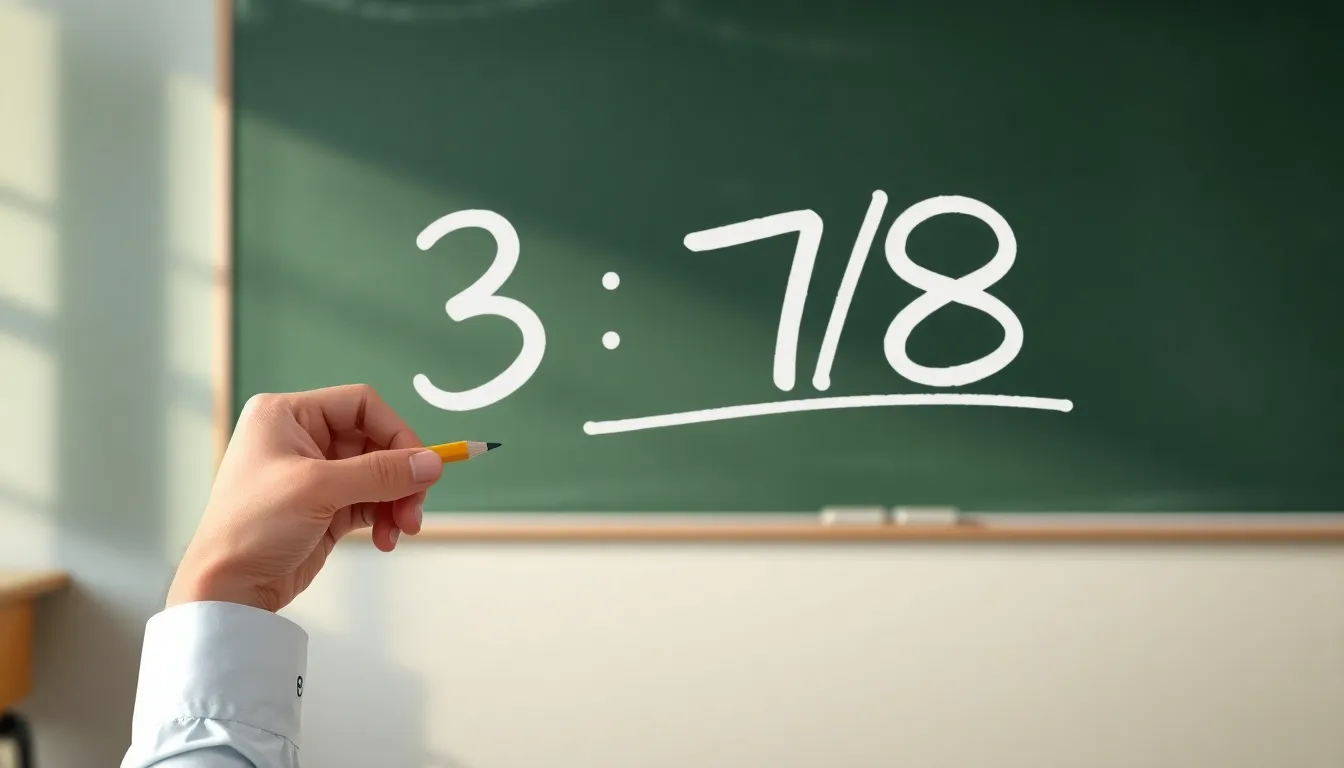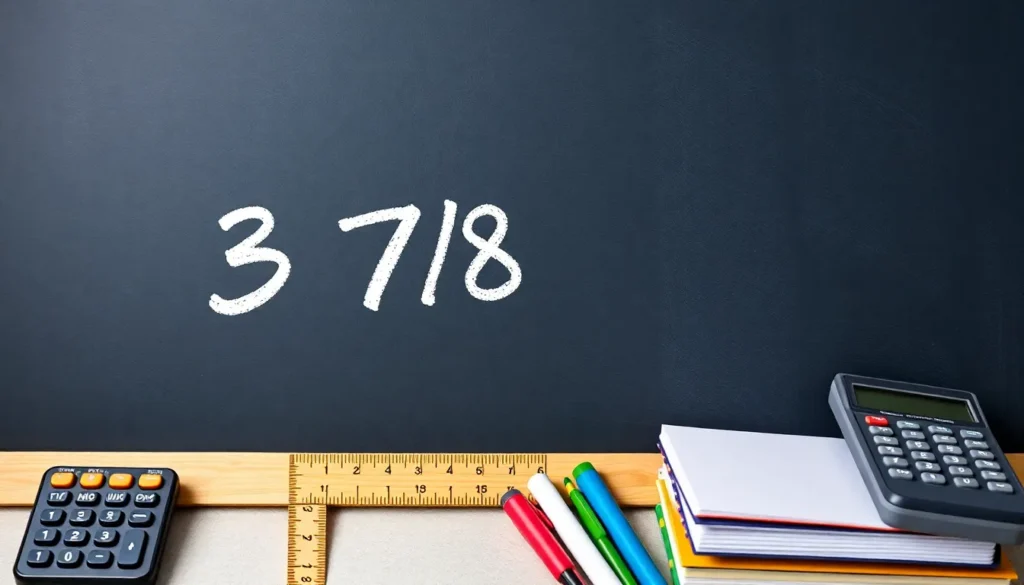When it comes to fractions, many people feel like they’re trying to decipher a secret code. Just think about it—3 7/8 might sound like a character from a quirky sitcom, but in the world of numbers, it’s a fraction waiting to be transformed into a decimal superstar. Understanding how to convert it can make math feel less like a chore and more like a fun puzzle to solve.
Table of Contents
ToggleUnderstanding Fractions
Fractions represent a part of a whole and can often seem confusing. Grasping fractions, however, makes the process of conversion to decimals straightforward.
What is a Fraction?
A fraction consists of two numbers: the numerator and the denominator. The numerator indicates how many parts are considered, while the denominator shows the total number of equal parts in a whole. For example, in the fraction 3 7/8, the 3 denotes whole units, and 7/8 signifies a portion of another whole. Understanding this structure helps individuals interpret fractions as quantities rather than a mere arithmetic exercise. They fulfill a crucial role in mathematics, allowing for precise representation of values.
Components of a Fraction
Numerators and denominators are essential components of fractions. The numerator sits above the line, indicating the number of parts. Conversely, the denominator resides below the line, signifying the total parts within a whole. For instance, in 3 7/8, 3 represents the entire whole parts, while 7/8 indicates the additional fraction. This composition provides clarity in mathematical expressions, promoting better problem-solving approaches. Recognizing how each part functions empowers individuals to manipulate and convert fractions effectively. Understanding these components simplifies working with fractions in various contexts.
Converting Mixed Numbers to Decimals

Converting mixed numbers to decimals simplifies mathematical expressions. This process makes fractions easier to work with in everyday applications.
The Process Explained
First, identify the whole number and the fractional part. For 3 7/8, the whole number is 3, and the fraction is 7/8. Next, convert the fraction to a decimal by dividing the numerator by the denominator, which means dividing 7 by 8. The result of that division equals 0.875. Add this decimal to the whole number. Since 3 is the whole number, the final conversion combines 3 and 0.875 to create 3.875. This method clearly illustrates how mixed numbers translate into decimal form.
Step-by-Step Example
To illustrate, take 3 7/8 for conversion. Start with the fraction 7/8. Divide 7 by 8, yielding 0.875. After determining the decimal of the fraction, add that value to the whole number, 3. Performing the addition results in 3.875. This step-by-step approach clearly shows how to convert any mixed number into a decimal format efficiently. By following these steps, individuals can gain confidence in handling various mixed numbers during calculations.
Detailed Conversion of 3 7/8 as a Decimal
Converting 3 7/8 into a decimal involves clear steps for accuracy. First, separate the whole number from the fraction. In this case, 3 is the whole number, and 7/8 is the fractional part.
Breaking Down the Calculation
To convert the fraction 7/8 into a decimal, divide the numerator by the denominator. A straightforward division shows that 7 divided by 8 equals 0.875. After obtaining this decimal, the next step is to add it to the whole number. Adding 3 to 0.875 results in 3.875. Each component contributes to the final calculation.
Result Interpretation
The decimal representation of 3 7/8 is 3.875, reflecting the combination of whole numbers and fractions. This value illustrates how mixed numbers equate to decimals in practical applications. Understanding this conversion fosters confidence when working with fractions, enabling easier manipulation of mathematical expressions in everyday scenarios. Individuals can apply this knowledge to quickly convert similar mixed numbers into decimals.
Applications of Decimals in Real Life
Decimals play a crucial role in various aspects of daily life. They provide clarity in measurements, financial transactions, and mathematical calculations.
Importance in Mathematics
Understanding decimals is essential for mastering various math concepts. They facilitate operations like addition, subtraction, multiplication, and division. In advanced mathematics, decimal representation makes it easier to grasp concepts like percentages and ratios. Many standardized tests include decimal operations, emphasizing their significance in assessing mathematical proficiency. Mastery of decimal forms can elevate problem-solving skills in algebra and calculus.
Usage in Everyday Situations
Decimals frequently appear in practical scenarios. When shopping, consumers often encounter prices listed in decimal form, such as $4.99 or $19.75. Accurate calculations involving measurement, like cooking or woodworking, also rely on decimal usage. Additionally, decimal-based currency systems allow for precise exchanges, whether in cash or digital formats. Understanding decimals enables individuals to manage budgets effectively, ensuring accurate financial planning and control.
Understanding how to convert 3 7/8 into a decimal is a valuable skill that simplifies various mathematical tasks. This knowledge not only enhances confidence in handling mixed numbers but also opens doors to more complex calculations.
By mastering the conversion process, individuals can tackle fractions with ease and apply this understanding in real-life scenarios like budgeting and measurements. The clarity gained from recognizing the relationship between fractions and decimals empowers people to navigate math more effectively.
Embracing this knowledge transforms math from a daunting challenge into an approachable and enjoyable experience.





